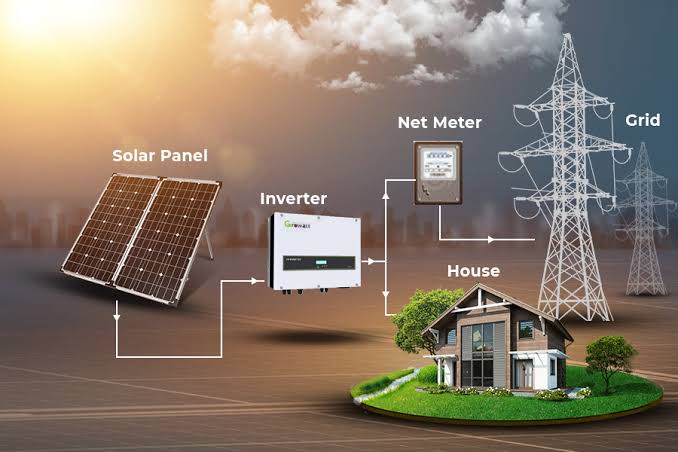Home / Services

In India, a significant number of industrial complexes, parking facilities, and residential structures utilize tin roofs as a common roofing material. The decision to install solar panels on tin roofs is driven by its advantages, offering a cost-effective and durable solution. Beyond the environmental benefits of harnessing solar energy, this approach also contributes to the aesthetic improvement of the roof, building, or house.
SunEdge Projects has actively participated in this initiative, successfully installing approximately 10 megawatts of solar capacity on tin roofs. This strategic deployment spans diverse geographical regions, including Haryana, Delhi, Rajasthan, Madhya Pradesh, Uttar Pradesh, Jharkhand, and West Bengal.
The choice of tin roofs for solar installations not only proves to be financially advantageous but also enhances the overall visual appeal of the infrastructure. The successful completion of numerous projects across different states underscores SunEdge Projects’ expertise in implementing solar solutions on tin sheds. These installations showcase the company’s commitment to advancing sustainable energy practices while seamlessly integrating with the existing structures. Explore some of our noteworthy projects to witness firsthand the positive transformation brought about by solar installations on tin roofs.




Solar panels can be effectively installed on the concrete roofs of individual houses or duplexes using an elevated structure. This innovative system involves elevating the structure to a certain height to accommodate the installation of solar panels. By adopting this approach, the entire roof space becomes available for personal use, allowing for activities such as developing a kitchen garden, organizing get-togethers or parties, and imparting an elegant aesthetic to the entire roof.
SunEdge Projects has successfully implemented solar installations using elevated structures on roofs across various regions, including Haryana, Delhi, Rajasthan, Madhya Pradesh, Uttar Pradesh, Jharkhand, and West Bengal.
Our projects showcase the dual benefits of harnessing solar energy and optimizing the rooftop space for versatile and aesthetic purposes. Explore some of our distinguished projects featuring solar installations on elevated structures to witness the transformative impact on both energy efficiency and the visual appeal of the roof.






Switching to solar energy with bi-directional meters transforms the conventional unidirectional energy flow. This advanced meter not only measures electricity consumption but also facilitates feeding excess solar-generated units back into the grid. Monthly billing reflects both consumed and generated units, allowing users to pay only for their net consumption. This dual-functionality not only reduces electricity bills but also promotes a more sustainable and environmentally conscious energy approach. Embracing solar technology and bi-directional meters empowers individuals to actively contribute to a greener future while enjoying the financial benefits of reduced energy costs.




This innovative system has demonstrated its success, particularly in areas where the primary source of electrification is not the grid but rather a Diesel Generator (DG). Solar power generated by panels is efficiently stored in batteries, seamlessly synchronized with the DG. Farmhouses emerge as ideal candidates for such integrated systems, maximizing self-sufficiency and minimizing reliance on conventional power sources.
It’s worth noting that this effective system isn’t limited to farmhouses alone; it can be seamlessly integrated into residential settings as well. The flexibility and adaptability of this solution make it a viable option for diverse locations, catering to both rural and urban energy needs.
For a closer look at the practical application of this technology, explore some of our showcased projects in farmhouses, where the synergy of solar and DG power systems has proven to be both reliable and cost-effective.






A hybrid solar system integrates solar energy with another power source, enhancing reliability and sustainability. Common configurations include solar-wind, solar-diesel, solar-battery, and solar-hydro hybrids. For instance, a solar-battery system stores excess energy during sunny periods, providing a continuous power supply during low sunlight or at night. These hybrid solutions address the intermittency of renewable sources, offering more stable and versatile energy generation. The choice of a specific hybrid system depends on factors such as location, energy needs, and available resources. Overall, hybrid solar systems play a crucial role in advancing resilient and eco-friendly energy solutions, contributing to a more sustainable future.
A Solar On-Grid System with DG Synchronization seamlessly integrates solar power, the electrical grid, and a diesel generator to ensure a reliable and continuous energy supply. Solar panels convert sunlight into electricity through an on-grid inverter, synchronizing the power with the electrical grid. During periods of low solar production or high demand, an automatic transfer switch (ATS) facilitates the smooth integration of a diesel generator. This synchronized system optimizes energy usage, ensuring uninterrupted power by automatically switching between solar, grid, and diesel generator sources. The setup is beneficial in locations with intermittent grid access or unreliable power, providing energy resilience and sustainability. Additionally, the integration with the grid allows users to take advantage of net metering, potentially reducing energy costs and promoting a more efficient and environmentally friendly energy profile.


Net-Metering Service: We Provide Net Metering, Net billing, Gross metering Service Across All Over India. We Have Dedicated Team And Good Experience In Every State Discomes.
Now Join Us For Hassle Free Experience. For More Details
Net metering is the most lucrative option for a solar consumer in India. With this system, the value of electricity you export to the grid is the same as what you import from the grid. The bill calculation would be based on the net value, i.e. import exports.
From the above assumption,
Net value= 7kWh- 2kWh = 5kWh
Billing: ₹8 x 5= ₹40
Savings: 120-40= ₹80
Net metering has multiple benefits.
• High savings
• No requirement for a storage system
• Shorter payback period
Many states in India offer net metering facilities for up to 1 MW solar capacity. However, there are two primary requirements that the government imposes on all those availing this facility:
The consumer has to install a net meter (a bi-directional meter) that records the imports and exports.

Emergency call ipsum dolor sit amet, consectetur adipiscing elit.Phasellus rhoncus efficitur magna nec pellentesque.
Emergency call ipsum dolor sit amet, consectetur adipiscing elit.Phasellus rhoncus efficitur magna nec pellentesque.